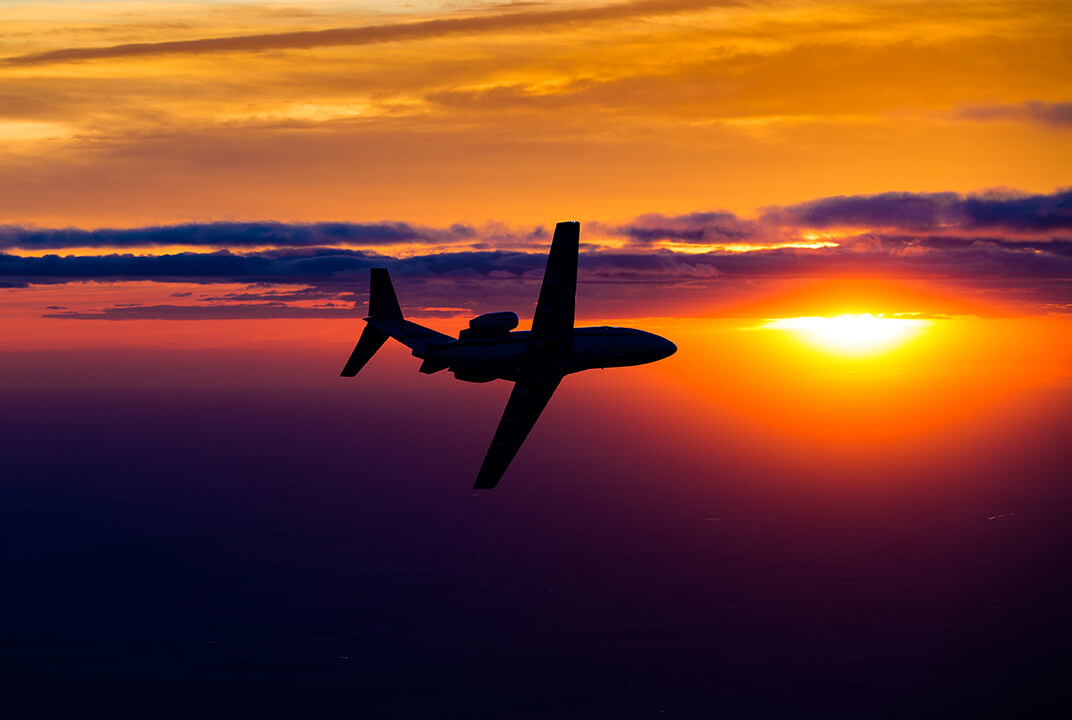Insight | Gold standard connectivity should be your one constant in times of change
Gold standard connectivity should be your one constant in times of change
Aviation
Business aviation is changing – and quickly. In such a dynamic landscape, it pays to have a connectivity solution that is reliable, consistent and works wherever a Principal needs to fly.
When Inmarsat Aviation’s Head of Business and General Aviation, Kai Tang, spoke to Corporate Jet Investor’s global online conference in the summer of 2020, just as the full implications of the global pandemic were becoming apparent, he highlighted the growing importance of predictability in business aviation, explaining that against a backdrop of increasing instability and turbulence, reliability and consistency were king. And for Inmarsat this meant – and continues to mean – delivering predictable inflight connectivity solutions.
A year on, and the idea of predictability being the new luxury for business aviation still holds true for Principals. But for the industry as a whole, unpredictability is on the rise. This is particularly acute when it comes to changing patterns of flight traffic.
Looking back to flight path data from 2018, Tang highlights how business aviation connectivity was primarily situated across North America and Europe. Three years on, and while those regions are still prevalent, the habits of Inmarsat’s customer base are evolving and shifting. “There’s a lot of additional traffic,” he points out. “Especially across Asia Pacific and other emerging routes – there’s a lot of density through the Hawaiian Islands down to South America and Africa.”
Be prepared for a fluctuating future
As a global satellite operator, this is important. There may well be a variety of reasons for these changing, or unpredictable patterns, but it’s our job to offer a reliable and robust connectivity service to our Principals regardless of where they are flying, when they are flying or any other unpredictable behaviours or demands.
“This unpredictability is something that, as a satellite operator, we have to take into account when we’re designing systems,” Tang says. “Particularly for an industry like business aviation. It takes time to ensure you have all the satellite coverage and capacity. But also the gateways and all of the end-to-end interconnections that ensure the email reaches where it needs to, that the voice call reaches where it needs to and that the conference call can be connected.”
A key takeaway is the importance of being prepared. Tang points out that trying to build things as demand grows and shifts is foolhardy – there isn’t enough time. That’s why we are always futureproofing our systems so that we can adjust in real-time to the unpredictability of the market.
Data demand and consumption surging
We are not just seeing business aviation’s range and locations become more global. Data demands have changed too and we have seen a rapid surge across the cabin and the cockpit. An increasing reliance on and use of streaming services such as Netflix is one reason, but web browsing, network storage and software updates are also responsible for this sheer upturn in data usage. “As technology improves with regards to computing power and certainly with devices and apps, these are becoming more and more bandwidth intensive – or bandwidth hungry, we like to say,” says Tang.
Additionally, operators and Principals are always finding newer ways to use connectivity on the plane. That’s why Tang believes that data demand and data consumption – that were rising before the pandemic – won’t just level off as we come out of this COVID era. “We don't expect, and I don't think anyone does, that as we continue to see a relaxing of restrictions across the world, this won't just get back to its pre-pandemic levels and stay there,” he argues. “It will continue to rise at the rate that we were seeing before that.”
Therefore, it’s crucial that connectivity is built for mobility. If capacity doesn’t travel with a Principal, they can expect differing user experiences. And if there’s one thing that VIPs won’t accept it’s systems failing or their time being wasted – they expect things to just work.
The importance of staying the course
So what does all this mean? During a period of exceptional uncertainty it means tapping into the resilience that the aviation industry is famed for and aiming to “stay the course” says Tang. While others might exalt speed of connectivity, this shouldn’t be the focus as far as Tang sees it. “We’re doing the right things by futureproofing our systems for consistent, reliable and dependable connectivity Principals can rely on.”
“At the end of the day, they don’t care what system they’re using,” Tang continues. “They shouldn’t care where they are in the world and why that might be an excuse for the connectivity not being as great right now as it was an hour ago. A lot of things are unpredictable. Connectivity shouldn’t be one.”
It’s here where our experience and expertise comes to bear. We’re currently seeing 99.8% of Principal data demands being met. To consistently hit this figure is a testament to Inmarsat’s global mobility and reliability which allows us to adapt to shifting customer patterns to ensure Principals can host that conference call whenever they need to and no matter where they’re flying.
There’s another point to consider here too – with added relevance for those operating or selling pre-owned aircraft. “An inflight connectivity system is an important investment on the aircraft,” says Tang. “It’s too important to compromise on quality or experience. A futureproofed solution preserves the value of the plane.”
Futureproofing vital
What does the future hold? Tang firmly believes that these evolving patterns will continue to develop. Business aviation is becoming more global; Principals are flying longer and further, and using more data as they do so. It’s our responsibility to plan not just for today, but for tomorrow. And that’s what we are doing, to ensure that we can meet these evolving needs. With 14 satellites in operation across Ka-band and L-band, and 7 more to come by 2023, Inmarsat will be able to provide the world’s most futureproofed business aviation connectivity solutions.
For Tang, futureproofing is paramount. When asked what to look for in a connectivity partner, Tang is unequivocal. “Think about the company behind the connectivity solution,” he concludes. “Does it have a history of developing products for aviation and a track record of continuing to develop for this industry? For an investment as large as connectivity I would not personally be an early adopter of something that may fade away in a few years’ time.”
Change might be the only constant in business aviation – but we’re here to meet this change head on.


